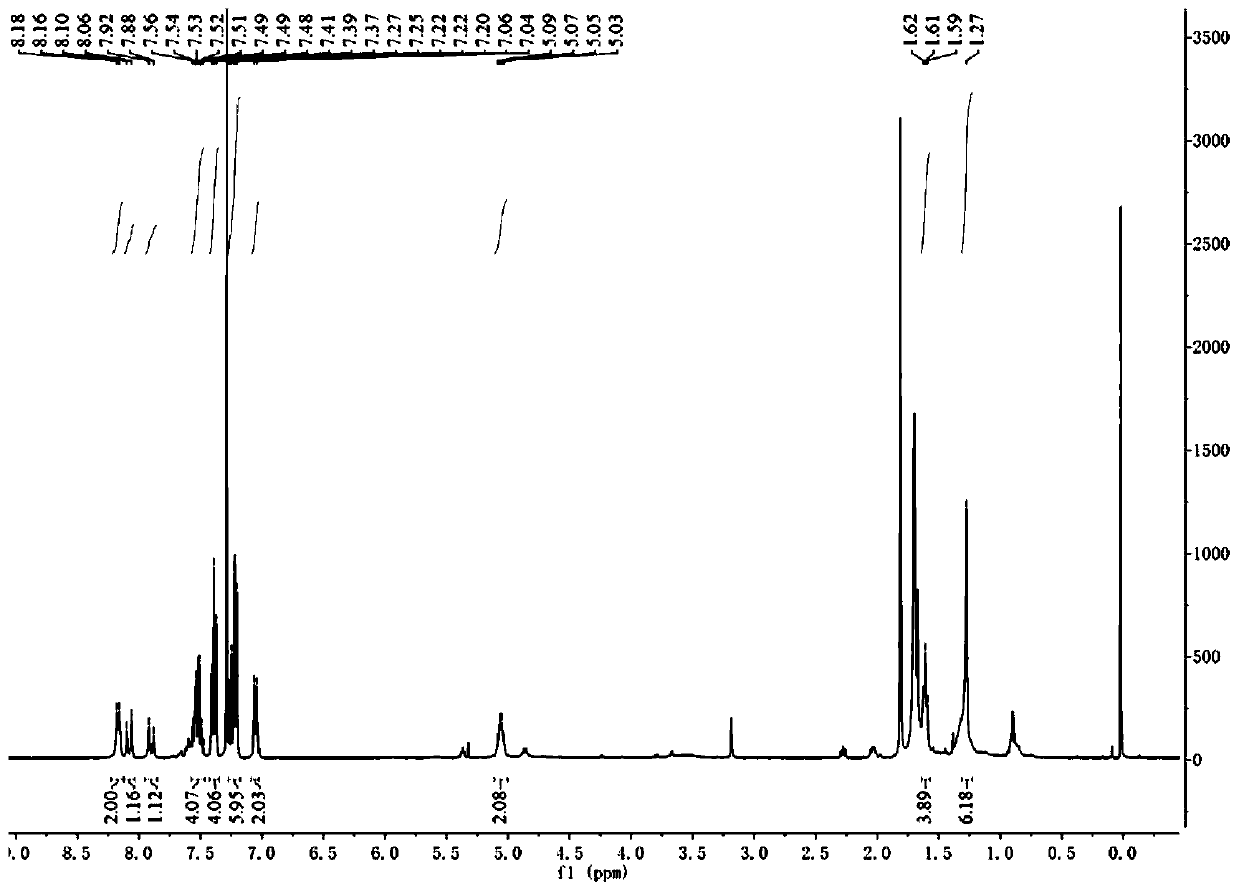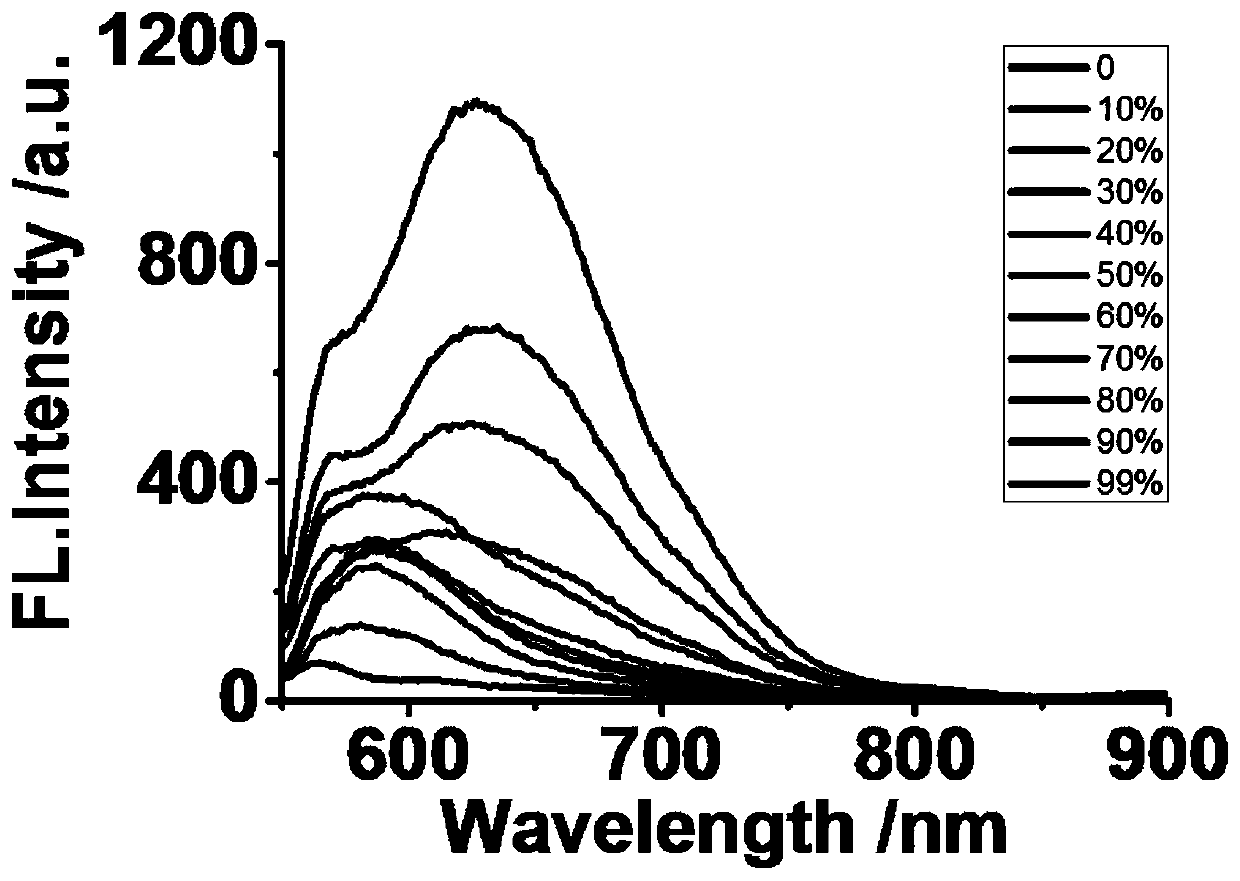Fluorescent probe for detecting viscosity and its synthesis method and application
A technology of fluorescent probes and synthesis methods, applied in the field of organic small molecule fluorescent probes, can solve the problems of less viscous fluorescent probes, cumbersome synthesis steps, high fluorescent background, etc., and achieve simple post-processing, high sensitivity, and wide application foreground effect
- Summary
- Abstract
- Description
- Claims
- Application Information
AI Technical Summary
Problems solved by technology
Method used
Image
Examples
Embodiment 1
[0032] Example 1 Synthesis of Fluorescent Probe 1
[0033]
[0034] 0.20 g of compound 1-1 (0.73 mmol) and 0.21 g of compound 2 (1.1 mmol) were dissolved in 20 mL of ethanol, and refluxed for 12 h under nitrogen protection. After the reaction, cool to room temperature, wash with ether three times, and then wash with eluent CH 2 Cl 2 / CH 3 OH=20:1 passed through the column to obtain fluorescent probe 1 with a yield of 60%. 1 H NMR spectrum see figure 1 .
Embodiment 2
[0035] Example 2 Synthesis of Fluorescent Probe 2
[0036]
[0037] 0.20 g of compound 1-1 (0.66 mmol) and 0.38 g of compound 2 (2 mmol) were dissolved in 20 mL of ethanol and refluxed for 20 h under nitrogen protection. After the reaction, cool to room temperature, wash with ether three times, and then wash with eluent CH 2 Cl 2 / CH 3 OH=10:1 passed through the column to obtain fluorescent probe 2 with a yield of 50%. 1 H NMR see figure 2 .
Embodiment 3
[0038] Example 3 Fluorescent probes detect solutions with different viscosities
[0039] A DMSO solution of probe 1 obtained in Example 1 with a concentration of 1 mM was prepared as a test mother solution for use;
[0040] Prepare fluorescent probe 1 solution with a final concentration of 2 μM, and solutions with different viscosities (volume ratios of ethanol and glycerol are 10:0, 9:1, 8:2, 7:3, 6:4, 5:5, 4 :6, 3:7, 2:8, 1:9, 1:99) for fluorescence detection (λ ex =540 nm), scan the fluorescence intensity in each system, such as image 3 Shown; in log n ( n is the viscosity value) is the abscissa, log I 630 As the ordinate, establish a fluorescence intensity and viscosity standard curve at 630nm, such as Figure 4 shown. Depend on image 3 It can be seen that as the viscosity increases, the fluorescence intensity at 630 nm increases gradually. Depend on Figure 4 It can be seen that there is a good linear relationship between the fluorescence intensity and the vi...
PUM
 Login to View More
Login to View More Abstract
Description
Claims
Application Information
 Login to View More
Login to View More - R&D
- Intellectual Property
- Life Sciences
- Materials
- Tech Scout
- Unparalleled Data Quality
- Higher Quality Content
- 60% Fewer Hallucinations
Browse by: Latest US Patents, China's latest patents, Technical Efficacy Thesaurus, Application Domain, Technology Topic, Popular Technical Reports.
© 2025 PatSnap. All rights reserved.Legal|Privacy policy|Modern Slavery Act Transparency Statement|Sitemap|About US| Contact US: help@patsnap.com



